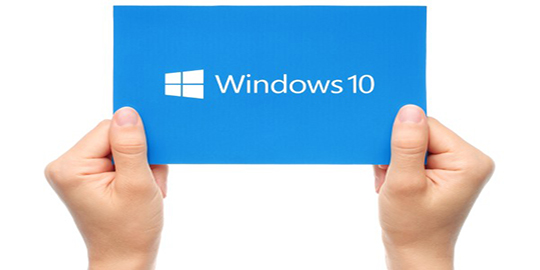
Welcome Windows 10!
Microsoft's new operating system, Windows 10, is finally here, with the free version available as of late July 2015.
Windows 10 represents a significant improvement over its predecessors (Windows 8 and Windows 8.1), offering a user experience that is optimized for each device, thus creating a truly multiplatform system that can be used on smartphones, tablets, laptops and desktop PCs, but also consoles and televisions. The system retains the "universal applications" concept that was introduced with the last Windows system, this time providing single storage and the ability to run applications anywhere.
Windows 10 harnesses a new concept for Modern (formally Metro) applications, called Universal Windows Platform.
The Universal Windows Platform allows developers to build a single application that will run on a range of devices, unlike universal applications that actually meant developers had to create two applications (a second app for mobile devices).
What's new in Windows 10:
Start menu
The Start menu is back, combining the Windows 7 button with the Windows 8 Modern applications display.
The new Edge browser, Cortana
Rather than replacing Internet Explorer 11, which is still bundled with the system, Edge is an integral part of Windows 10. As well as being "lightweight", the browser offers two attractive new features; the ability to select page sections, take notes and share them, and the combination of Edge and Cortana. Initially developed for Windows Phone, Cortana is now available with Windows 10 and works wonderfully in combination with Edge to enhance web searches.
Action Center
The notification center allows users to easily enable and disable some of the operating system's key functions (LAN, configuration, airplane mode, etc.), while it also compiles a list of key events (installation, updates) and suggestions (security and maintenance).
Virtual desktops
A useful feature for organizing tasks across several virtual desktops. Furthermore, all applications can be linked via a new interface called Task View (in Windows 7 it was Windows Flip and in Windows 8 Switcher).
Snap Assist and Continuum
The Snap View, which helped applications in Windows 8, has been further enhanced via the new window opening, while Windows 10 suggests to users how best to use the available space with up to four applications.
Continuum is unquestionably the most appealing function for hybrid devices, such as the Surface, offering users a desktop view when the keyboard is connected and the Start menu when it is not.
Universal search
Windows 10 allows users to search applications, files and content both locally and on the internet.
Other equally important Windows 10 features have been inherited from mobile devices, such as the Battery Saver and Data Sense.
Now more than ever, users need devices that support seamless use in different rooms and offices, or when on trains or planes, and Microsoft is delivering better and better instruments to help drive productivity.
Windows 10 can be downloaded from the following link:
